Planning to drive in France and wondering if it's worth the stress?
Planning on driving in France and wondering if it’s worth the stress?
Table of Contents
ToggleFirstly, I love a road trip!
Having the flexibility of stopping wherever you are on holiday is the best. You see so much more and get to experience some of the smaller, less touristy towns. France was no different!
So, are you planning to rent a car and drive in France and wonder how and if you should?
I just did it, and let me tell you, it’s worth it! However, there are several things to consider if you are planning to drive in France as a tourist. Here’s everything you need to know to have a smooth and enjoyable European road trip experience.
Disclaimer: Please note that some of the links in this article may be affiliate links. This means that, at no extra cost to you, I may earn a small commission if you click on or make a purchase through these links.

What You Need to Rent a Car in France
Before you even pick up your rental car and drive on the French roads make sure you have the following:
- Driver’s License: A valid driver’s license from your home country.
- ID (Passport): For identification purposes.
- Credit Card: In the name of the driver for securing the rental.
- International Driver’s Permit (IDP): We never got asked to see it, but you do need it if you get pulled over. An IDP translates your license into multiple languages, making it easier for local authorities to understand.
Where to Rent a Car in France
There are numerous rental companies to choose from if you are going to drive in France, including well-known international brands like Hertz, Avis, and Europcar, as well as local companies such as Sixt and Rent A Car.
I found me rental car on Reantalcars.com and picked up my vehicle from Paris Airport, which was seamless. It was easy to locate the rental counter and was only a short wait until we were on the French roads!
Major airports like Charles de Gaulle in Paris, Nice Côte d’Azur Airport, and Lyon-Saint Exupéry Airport have a wide selection of rental companies as well as from city centres or train stations.
Compare rental cars on the same site I used (and recommend)
Crossing Borders with Your Rental
Planning to cross a border from France? Many rental companies allow border crossings, and we did without any issues. We went into Germany and Austria.
However, you need to confirm this when booking your car rental to avoid any surprises. Generally, if you check the cross-border policy when booking, it will specify which countries you will be allowed to drive to from France. This will also tell you if there are any fees for it, such as a daily fee or a flat fee.
Choosing the Right Car Size
Opt for a smaller car if possible or if you’re not an overly confident driver. French streets, especially in older towns, can be narrow and challenging to navigate with a larger vehicle. Smaller cars are also easier to park and more fuel-efficient, which is a plus considering the high fuel prices in Europe. We found the petrol in France especially expensive.
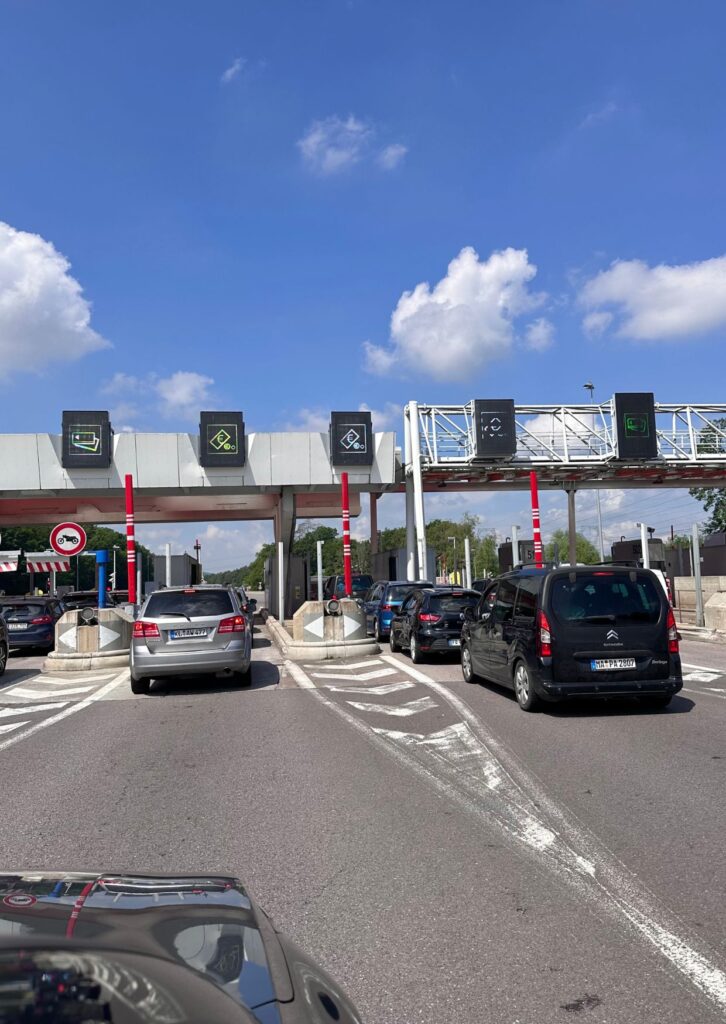
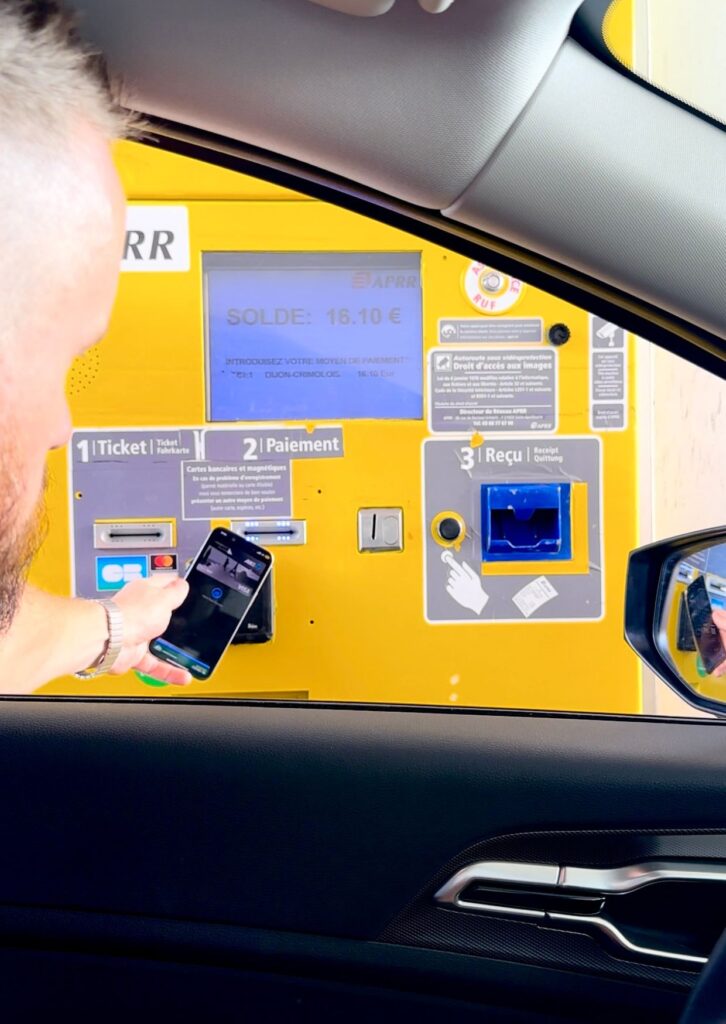
Toll Booths in France Explained
France has an extensive network of toll roads, which are generally faster and less congested than the free alternatives. We did not run into a single traffic jam on toll roads and was a time saver diving between cities.
France has two types of toll systems:
- Ticket System: You take a ticket when you enter the toll road and pay when you exit.
- Barrier System: You pay a fixed fee at a toll booth.
We spent around €30 per day on tolls, so budget accordingly as these costs can add up. Toll booths accept cash and credit cards.
Parking in France
Finding parking can be tricky in some European cities, especially in pedestrian-only areas like the old towns. Planning in advance is key. We informed our hotels about our parking needs, and they either reserved spots in their parking garages for us (for a fee) or advised us on the best nearby parking options. Most of the hotels we booked were on the outskirts of the old town. There was only one hotel where we had to drive through the old town pedestrian area to enter the garage, and it was a little stressful, so keep that in mind.
Types of Parking in France:
- Street Parking: Pay attention to parking signs and meters. Parking can be free at certain times but always check the local regulations. I found it was good to have a little change on you for parking as some meters were funny about taking an international credit card.
- Parking Garages: Often the best option in busy cities. They are more secure and save you the hassle of searching for a spot. Hotels will be able to let you know where to park, just message them in advance.
TIP: If you planning on driving in Italy make sure to check out my
Tips for Hiring a Car and Driving in Italy
Traffic when Driving in France
Traffic will be a challenge in larger cities such as Paris, Marseille, or Bordeaux. Pretty standard for big cities, I would say, so plan your routes ahead of time and be prepared for potential traffic jams or at least allow for extra travel time. We got caught in traffic coming into Paris, and it was no joke. We were very lucky though as this was the only place in France where we ran into traffic jams.
Here are a few tips for dealing with traffic when you drive in France:
- Avoid Rush Hour: Major cities experience rush hour traffic between 7-9 AM and 5-7 PM. Try to plan your driving in France outside these hours.
- Use Navigation Apps: We used apps such as Google Maps or Waze, and they can provide real-time traffic updates and alternative routes.
- Consider Public Transport: For inner-city travel, using public transport might be more efficient. Book a hotel on the outskirts, park your car there, and get public transport in.
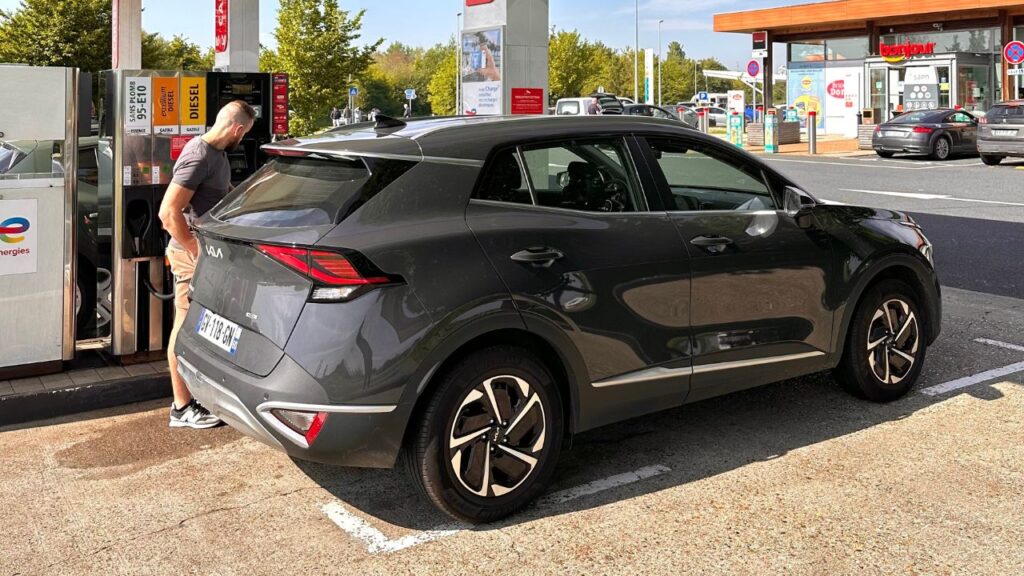
Filling Up with Petrol
Avoid refuelling on highways as the prices are significantly higher. Instead, try to fill up in towns or smaller cities to save money. If you’re driving a lot, it will add up.
I found the petrol stations in France require you to pre-authorize a credit card before it will allow you to fill up, so make sure you have a credit card handy.
Traffic Signs Explained
Familiarise yourself with French traffic signs before you start driving in France. Some signs might be different from what you’re used to, and knowing them will help you navigate safely and efficiently.
Here are a few common signs to look out for:
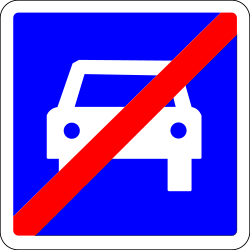
End of expressway
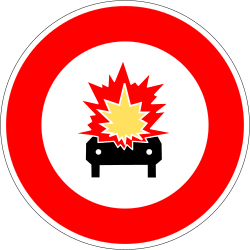
Vehicles with explosive materials prohibited
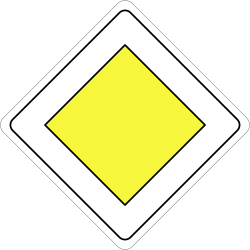
Priority Road
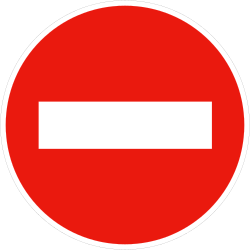
No Entry
If you are looking for more tips about visiting France. Make sure to check out Paris Sights and Attractions (Free and Paid with Prices) and
Beautiful Towns to visit from Paris by Train or Car next.
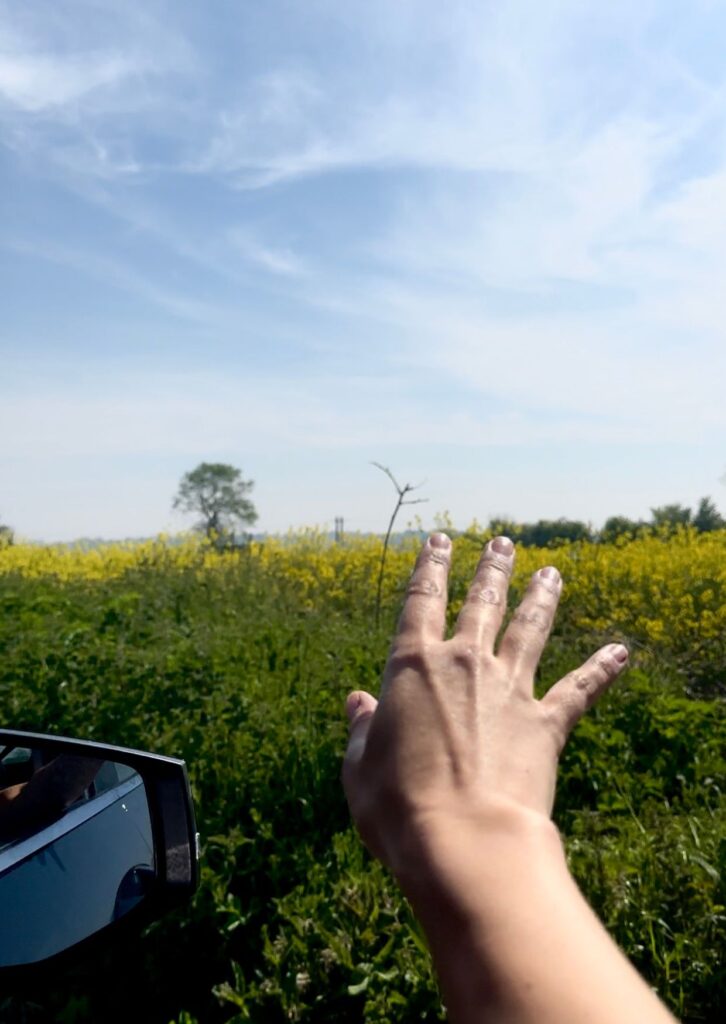
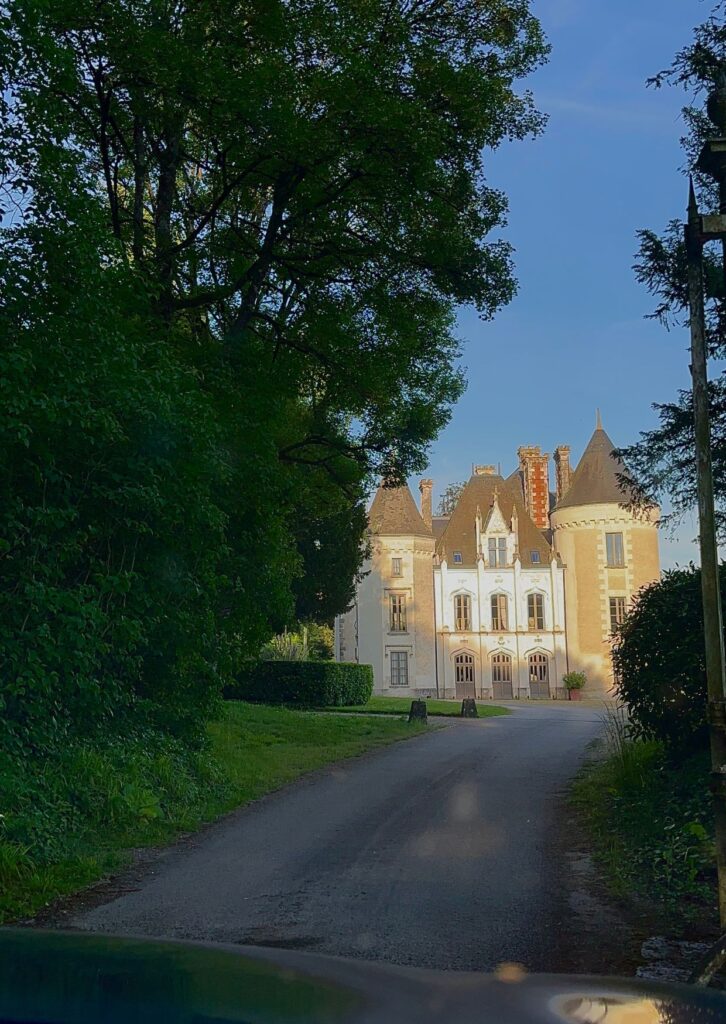
Additional Tips for Driving in France
Road Conditions and Driving Style
I found French roads are very well-maintained. However, like anywhere in the world, driving styles can vary. Make sure to stay calm, use your indicators, and always keep an eye out for scooters and motorcycles that may weave through traffic.
Emergency Numbers
In case of an emergency, dial 112, the European emergency number, which is accessible from any mobile phone. It’s also helpful to have the contact number of your rental company in case of breakdowns or accidents. Make sure to note that number down before you leave the rental company.
Scenic Routes
While toll roads are faster, consider taking the scenic routes to truly experience the beauty of the French countryside. You won’t regret it! These roads often pass through charming villages, vineyards, and picturesque landscapes.
Roadside Assistance
Ensure your rental includes roadside assistance. Most reputable rental companies offer this service, which can be a lifesaver in case of a breakdown.
Compare rental cars on the same site I used (and recommend)
Driving in France as a tourist can be an incredible experience. By planning ahead and keeping these tips in mind, you’ll be ready to explore the beautiful French countryside and bustling French cities! It will be a road trip to remember. I can’t wait to do another road trip in France soon!


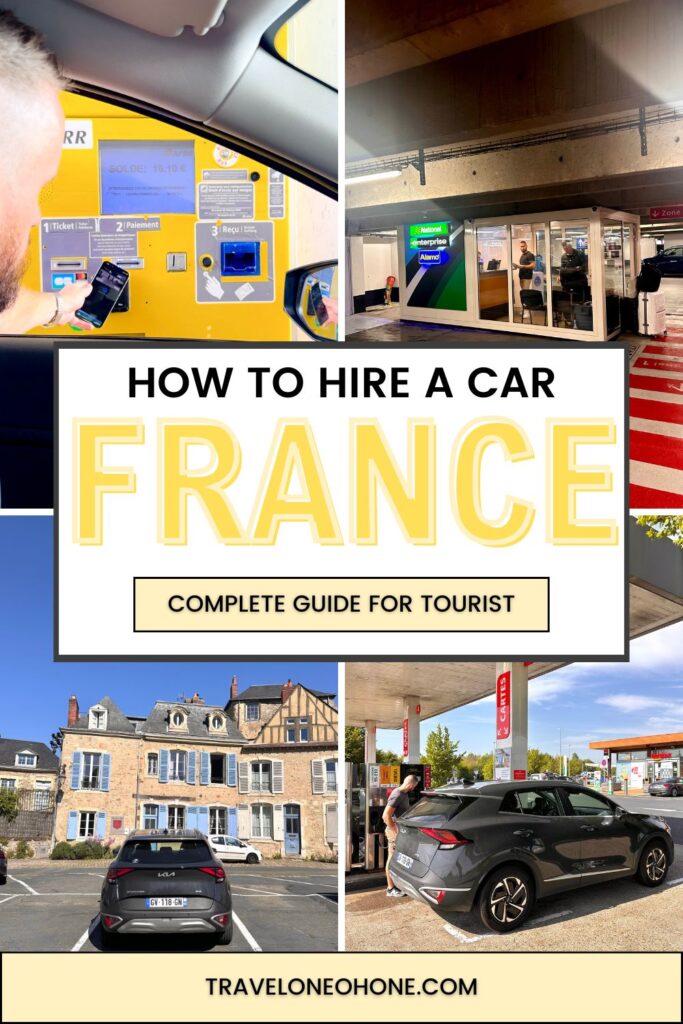
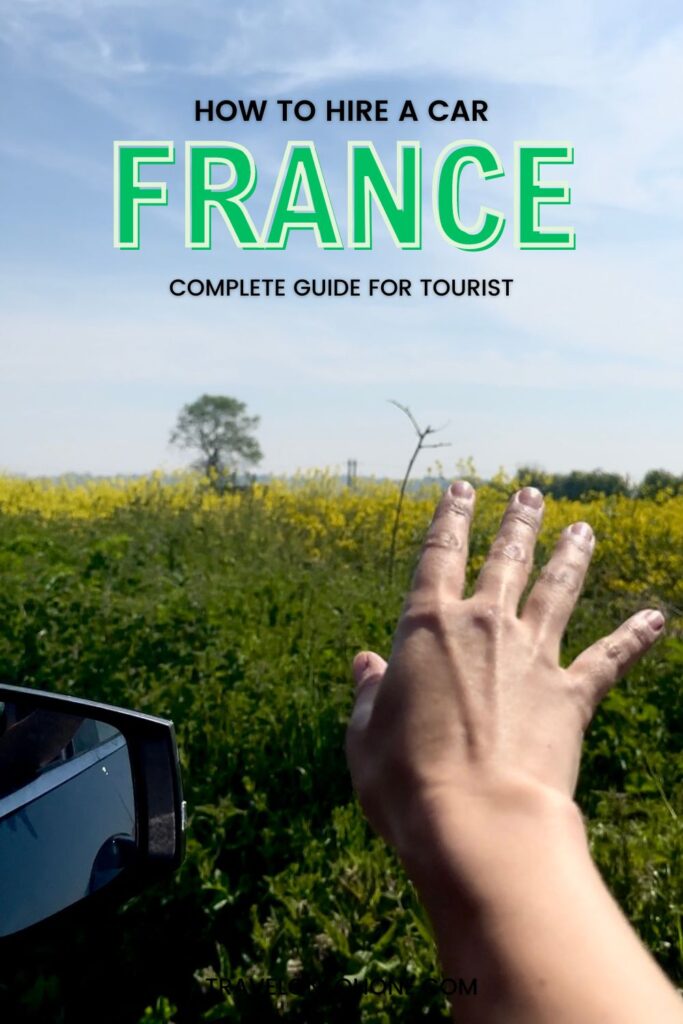

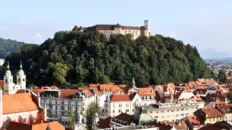

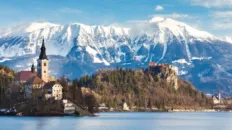
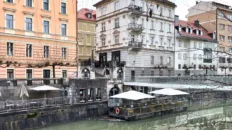



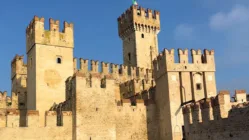

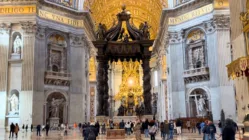

Add comment